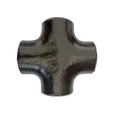-
Cangzhou Yulong Steel Co., Ltd.
-
Phone:
+86 13303177267 -
Email:
admin@ylsteelfittings.com
- English
- Arabic
- Italian
- Spanish
- Portuguese
- German
- kazakh
- Persian
- Greek
- French
- Russian
- Polish
- Thai
- Indonesian
- Vietnamese
- Zulu
- Korean
- Uzbek
- Hindi
- Serbian
- Malay
- Ukrainian
- Gujarati
- Haitian Creole
- hausa
- hawaiian
- Hebrew
- Miao
- Hungarian
- Icelandic
- igbo
- irish
- Japanese
- Javanese
- Kannada
- Khmer
- Rwandese
- Afrikaans
- Albanian
- Amharic
- Armenian
- Azerbaijani
- Basque
- Belarusian
- Bengali
- Bosnian
- Bulgarian
- Catalan
- Cebuano
- China
- China (Taiwan)
- Corsican
- Croatian
- Czech
- Danish
- Esperanto
- Estonian
- Finnish
- Frisian
- Galician
- Georgian
- Kurdish
- Kyrgyz
- Lao
- Latin
- Latvian
- Lithuanian
- Luxembourgish
- Macedonian
- Malgashi
- Malayalam
- Maltese
- Maori
- Marathi
- Mongolian
- Myanmar
- Nepali
- Norwegian
- Norwegian
- Occitan
- Pashto
- Dutch
- Punjabi
- Romanian
- Samoan
- Scottish Gaelic
- Sesotho
- Shona
- Sindhi
- Sinhala
- Slovak
- Slovenian
- Somali
- Sundanese
- Swahili
- Swedish
- Tagalog
- Tajik
- Tamil
- Tatar
- Telugu
- Turkish
- Turkmen
- Urdu
- Uighur
- Welsh
- Bantu
- Yiddish
- Yoruba

Nov . 22, 2024 15:05 Back to list
pipe types
Understanding Pipe Types Essential Guide for Engineers and Construction Professionals
Pipes play a crucial role in various industries, including construction, plumbing, and manufacturing. With a plethora of pipe types available, understanding their characteristics, applications, and material composition is essential for engineers and construction professionals. This article will delve into the most common types of pipes, highlighting their unique properties and applications.
1. PVC Pipes
Polyvinyl Chloride (PVC) pipes are among the most widely used plastic piping materials. Renowned for their lightweight, corrosion-resistant nature, PVC pipes are commonly employed in drainage, irrigation, and sewage systems. They can handle a range of temperatures and pressures, which makes them suitable for various applications.
PVC pipes are easy to install due to their light weight, which reduces labor costs and effort. Additionally, they are available in various diameters and lengths, allowing flexibility in design and implementation. However, it's important to note that while PVC is resistant to corrosion, it may not be suitable for high-temperature applications, as prolonged exposure to extreme heat can lead to warping.
2. CPVC Pipes
Chlorinated Polyvinyl Chloride (CPVC) pipes are similar to PVC but have been chlorinated to enhance their strength and heat resistance. This makes them an excellent choice for hot water applications, such as in residential and commercial plumbing systems.
CPVC can handle temperatures up to 200°F (93°C), making it ideal for carrying hot water without compromising its integrity. Additionally, like PVC, CPVC is also resistant to corrosion and does not rust or pit, further extending its lifespan. CPVC pipes are compatible with traditional plumbing fittings and are relatively easy to work with, making them a favorite among plumbing professionals.
3
. HDPE PipesHigh-Density Polyethylene (HDPE) pipes are known for their exceptional strength-to-density ratio, making them a popular choice for water and gas distribution. They are highly resistant to impact, corrosion, and chemicals, which enables HDPE pipes to be used in various industries, including agricultural, municipal, and industrial sectors.
pipe types

HDPE pipes are flexible and can be installed in long lengths, reducing the number of joints and potential leak points. Their resistance to UV radiation and lower thermal conductivity further enhances their durability. However, proper handling and installation are crucial because improper techniques can lead to issues such as buckling or deformation.
4. Steel Pipes
Steel pipes, available in both galvanized and black varieties, are used for a wide range of applications, from water and gas transmission to structural purposes. Galvanized steel pipes, coated with a layer of zinc, are resistant to corrosion and rust, making them suitable for outdoor usage and in humid environments.
Black steel pipes, on the other hand, are commonly used to carry gas and are not coated, making them more susceptible to rust. However, their strength and durability make them a preferred choice for many professionals in the construction and oil sectors. Steel pipes are available in various diameters and can be welded or threaded for installation.
5. Copper Pipes
Copper pipes are known for their longevity, corrosion resistance, and ability to handle extreme temperatures. They are widely used in plumbing systems for both residential and commercial buildings. Copper pipes come in various sizes and thicknesses, which can be chosen based on the specific application.
One of the significant advantages of copper pipes is their inherent antimicrobial properties, making them a popular choice for potable water systems. However, copper pipes can be more expensive than other options and may require special techniques for installation, including soldering.
Conclusion
Understanding the various types of pipes is essential for engineers and construction professionals. Each pipe material offers unique advantages and is suited for different applications. Whether choosing PVC for its lightweight nature, CPVC for its heat resistance, HDPE for its flexibility, steel for its strength, or copper for its longevity, selecting the right type of pipe can significantly impact the durability and efficiency of any project. Therefore, comprehensive knowledge of pipe types is not just beneficial but pivotal in making informed decisions in the engineering and construction domains.
Latest news
-
ANSI 150P SS304 SO FLANGE
NewsFeb.14,2025
-
ASTM A333GR6 STEEL PIPE
NewsJan.20,2025
-
ANSI B16.5 WELDING NECK FLANGE
NewsJan.15,2026
-
ANSI B16.5 SLIP-ON FLANGE
NewsApr.19,2024
-
SABS 1123 FLANGE
NewsJan.15,2025
-
DIN86044 PLATE FLANGE
NewsApr.19,2024
-
DIN2527 BLIND FLANGE
NewsApr.12,2024
-
JIS B2311 Butt-Welding Fittings LR/SR 45°/90° /180°Seamless/Weld
NewsApr.23,2024











